|
Section 5:
Land and Infrastructure
13. Transport
(Great Britain only)
This section considers the transport infrastructure in the regions and devolved administrations. Four indicators are used: Transportation
of road freight (goods lifted) within and
between regions
Chart 13(a)
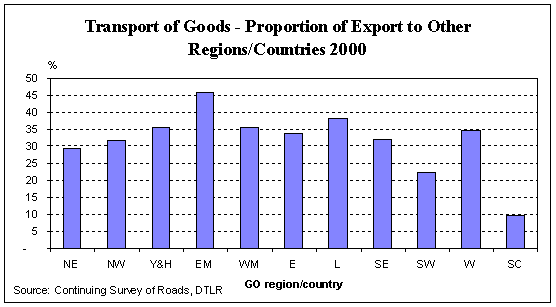
Travel to
work patterns
Table 13(b) and Chart 13 (b) provide data on the main mode of transport used to travel to work. During 2000 it was estimated that around 74% of people working in Great Britain travelled to work by car, van, minibus, motorcycle and bicycle (defined as private transport). The chart shows how Londoners, as opposed to residents of other areas, make much more use of public transport, with only 46% travelling to work by private means. Across Great Britain as a whole, around 11 per cent of people walked to work.
Chart 13(b)
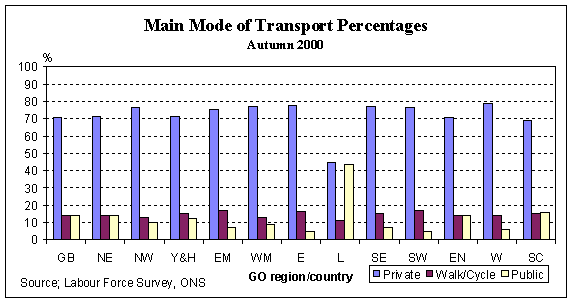
Table 13(c) and Chart 13(c) detail average journey times to work in Autumn 2000. The average for Great Britain as a whole was 25 minutes, with the average times for most regions between 20 and 25 minutes. Again, London was substantially different, with journey times above 40 minutes. Tables 13(d) and 13(e) cover two further indicators. These detail average speed (England only) and average daily vehicle flows on the roads. Speed is shown for major motorways and 'A' roads only. Vehicle flows cover all roads. In showing this information it is recognised that conditions within the region are often affected by conditions in other regions. For example, road freight often crosses regional boundaries; congestion in one region will have an effect in other regions. The figures show little change in vehicle speeds between 1996 and 1999 with vehicle flows remaining stable across most regions between 1999 and 2000.
Chart 13(c)
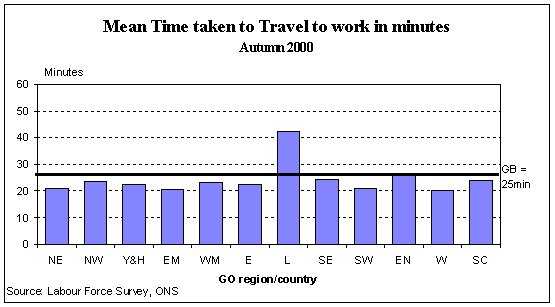
Chart 13(d)
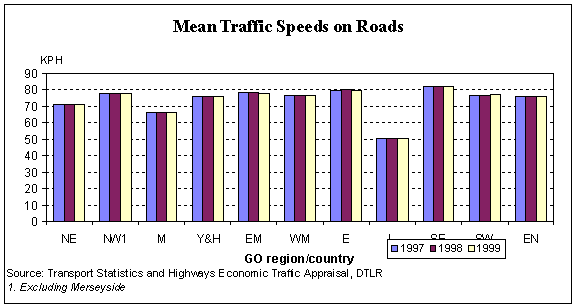
Chart 13(e)
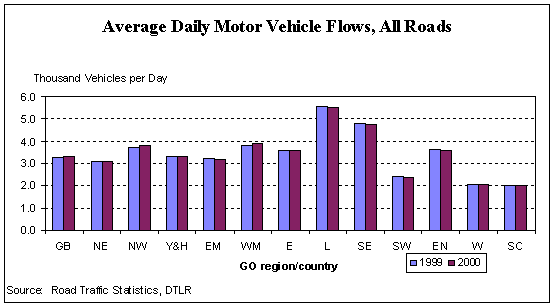
14.
Industrial Property and Office Rental Costs
This is a measure of property costs by region. It is drawn from a sample of different locations within a region from Inland Revenue valuations. Chart 14(a) shows the capital costs of industrial/warehouse units, circa 500 sq.m. Chart 14(b) shows average rental costs for 'Type 1' office accommodation, defined as town centre location, over 1,000 sq. m., with good quality fittings etc., in an office block erected within the last 10 years. Comparable information on rental costs of offices is currently available for GB only. The full definitions are given in Annex 1. Table 14(a) shows the capital value index of industrial property. Table 14(b) shows the rental cost index of office accommodation. The relatively high cost of industrial and office accommodation in London and the South East is clear. While costs of both types have been risen in London between 1997 and 2001, relative to other regions, rental costs of office accommodation in the South East have not risen during this time. In 2001 Wales had the lowest capital values for industrial property (index = 67.8%), and among the lowest rental costs (55.3%), not significantly different from the English region with the lowest rental costs, the East Midlands (55.2%).
Chart 14(a)
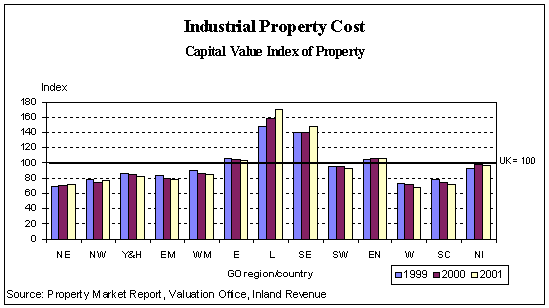
Chart 14(b)
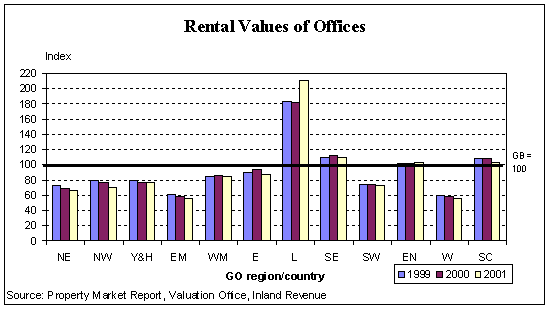
Home - Search - Site Map - Contact Us |